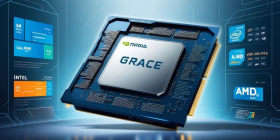The Steam Controller by Valve represents a daring leap into the future of gaming controllers. Released as part of their initiative to bridge the gap between PC gaming and the living room experience, Valve aimed to create a device not just to compete with traditional controllers but to redefine what we expect from them. This review uncovers the esse...
Steam Controller
The Steam Controller by Valve represents a daring leap into the future of gaming controllers. Released as part of their initiative to bridge the gap between PC gaming and the living room experience, Valve aimed to create a device not just to compete with traditional controllers but to redefine what we expect from them. This review uncovers the essence of the Steam Controller, exploring its multifaceted features and how it sizes up in today's gaming landscape.
Design and Build Quality
At first glance, the Steam Controller might baffle with its unconventional layout. It shuns the traditional dual-analog design for a mix of touchpads, buttons, and triggers. The build quality feels robust, with a matte finish that resists fingerprints, offering a comfortable grip for prolonged gaming sessions. Its innovative design, however, is a double-edged sword— inviting curiosity while also demanding a learning curve from its users.
The Touchpads
The highlight of the Steam Controller undoubtedly lies in its dual haptic feedback touchpads. These large, clickable surfaces offer a mouse-like precision that is unparalleled in the console-style controller market. Each touchpad is capable of a multitude of functions, customizable to an impressive degree. While the right pad often substitutes for a traditional joystick or mouse, the left is versatile enough to act as a directional pad or even an in-game menu.
Adaptable Controls
Flexibility is at the heart of the Steam Controller. Beyond its touchpads, every button and trigger on the device is fully customizable through the Steam interface. This adaptability extends to game profiles, allowing users to download configurations shared by the community or create their own from scratch.
Ergonomics and Comfort
Despite its unconventional appearance, the Steam Controller is surprisingly comfortable to hold. The buttons and triggers are well-placed for easy access, although users with smaller hands might find reaching some of the bumper buttons a stretch. The contoured design fits naturally in the hands, and the weight distribution feels balanced, making it ideal for long gaming marathons.
Performance In-Game
In practice, the performance of the Steam Controller can be a mixed bag. For games traditionally reliant on keyboard and mouse, the controller offers a compelling alternative, with its touchpads providing a level of accuracy that rivals the mouse. However, for games designed with traditional controllers in mind, the learning curve can be steep, and the experience feels less intuitive. With enough customization and practice, though, many of these initial hurdles can be overcome.
Wireless Capability and Battery Life
The controller is powered by two AA batteries, which are included in the box. It boasts a generous battery life, often lasting several months on a single set of batteries under normal use conditions. Wireless connectivity is robust and reliable, thanks to the included USB dongle, which ensures a seamless connection even in a living room setup where the PC may be several feet away.
The Steam Software Integration
Central to the Steam Controller experience is its deep integration with Steam itself. The Steam overlay provides easy access to the controller’s configurations while in-game, and the Big Picture mode is tailored to be navigated effortlessly using the controller. This synergy amplifies the appeal of the Steam Controller for dedicated users of Valve's gaming platform.
Verdict
The Steam Controller stands as a monument to innovation in the gaming world. It challenges established norms and offers a versatile alternative to traditional input devices. Although it might seem daunting due to its distinct nature and challenging learning process, the extensive customization options and accuracy it offers render it an attractive option for those eager to delve into its capabilities.
- Highly customizable controls for a personalized gaming experience
- Touchpads offer mouse-like precision for genres typically bound to keyboard and mouse
- Durable build quality and ergonomic design for comfort
- Excellent battery life and reliable wireless connectivity
- Seamless integration with Steam and its vast gaming library
- Steep learning curve due to unconventional layout
- Performance varies greatly depending on the game genre
- Some buttons may be hard to reach for users with smaller hands








